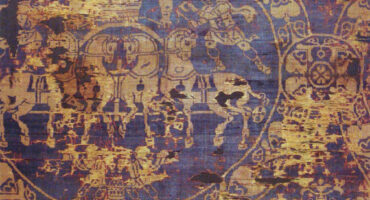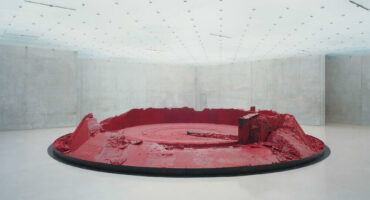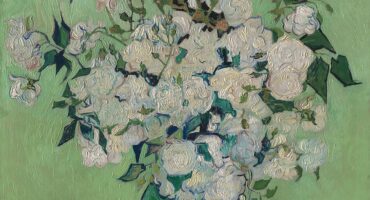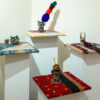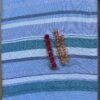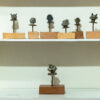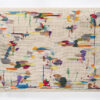Hello World!
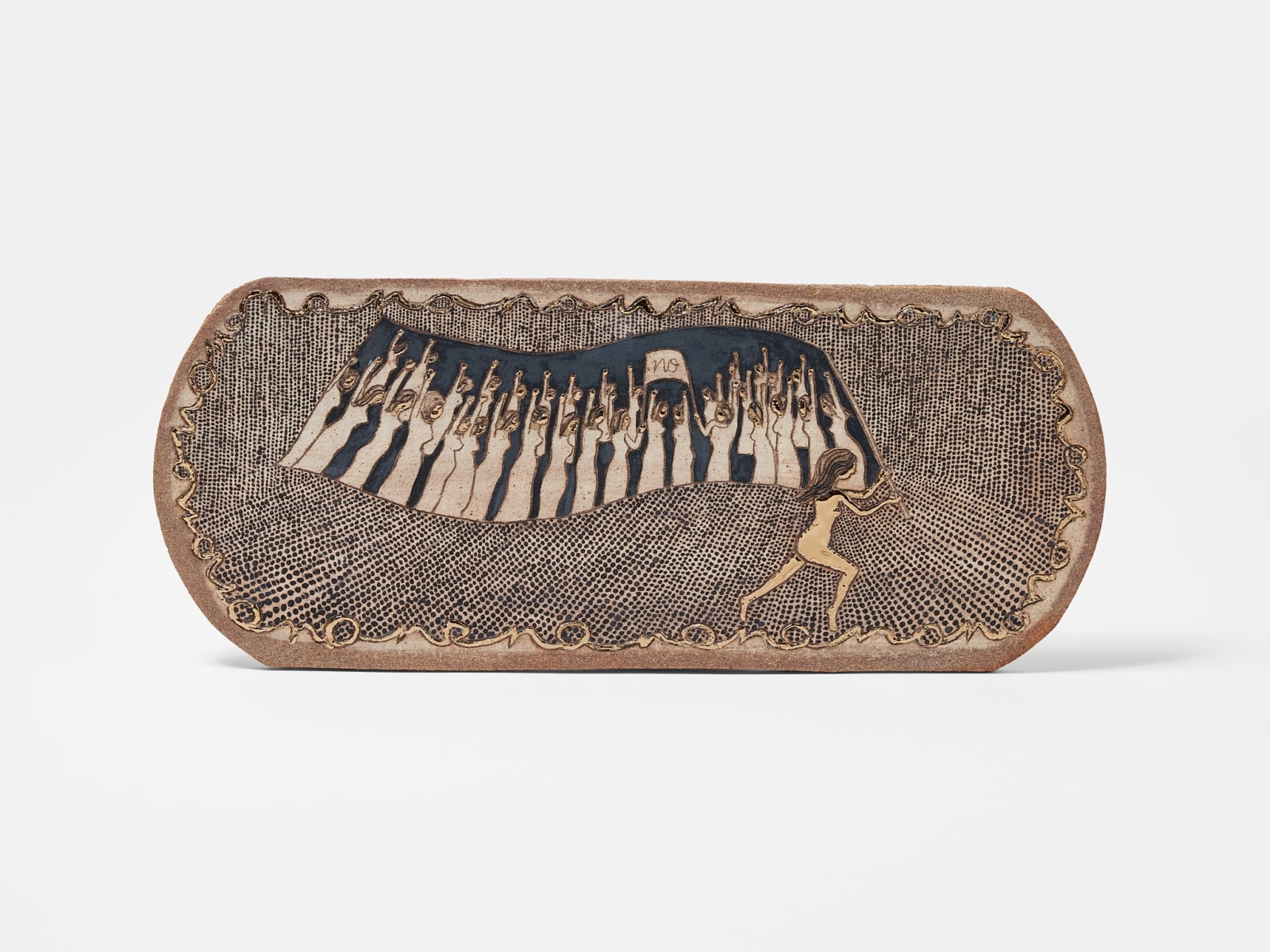
A Practice of Resistance: Elif Uras’s Earth in their Hands
Galerist, Istanbul
16 September –8 November 2025
By Tamara Chalabi, PhD
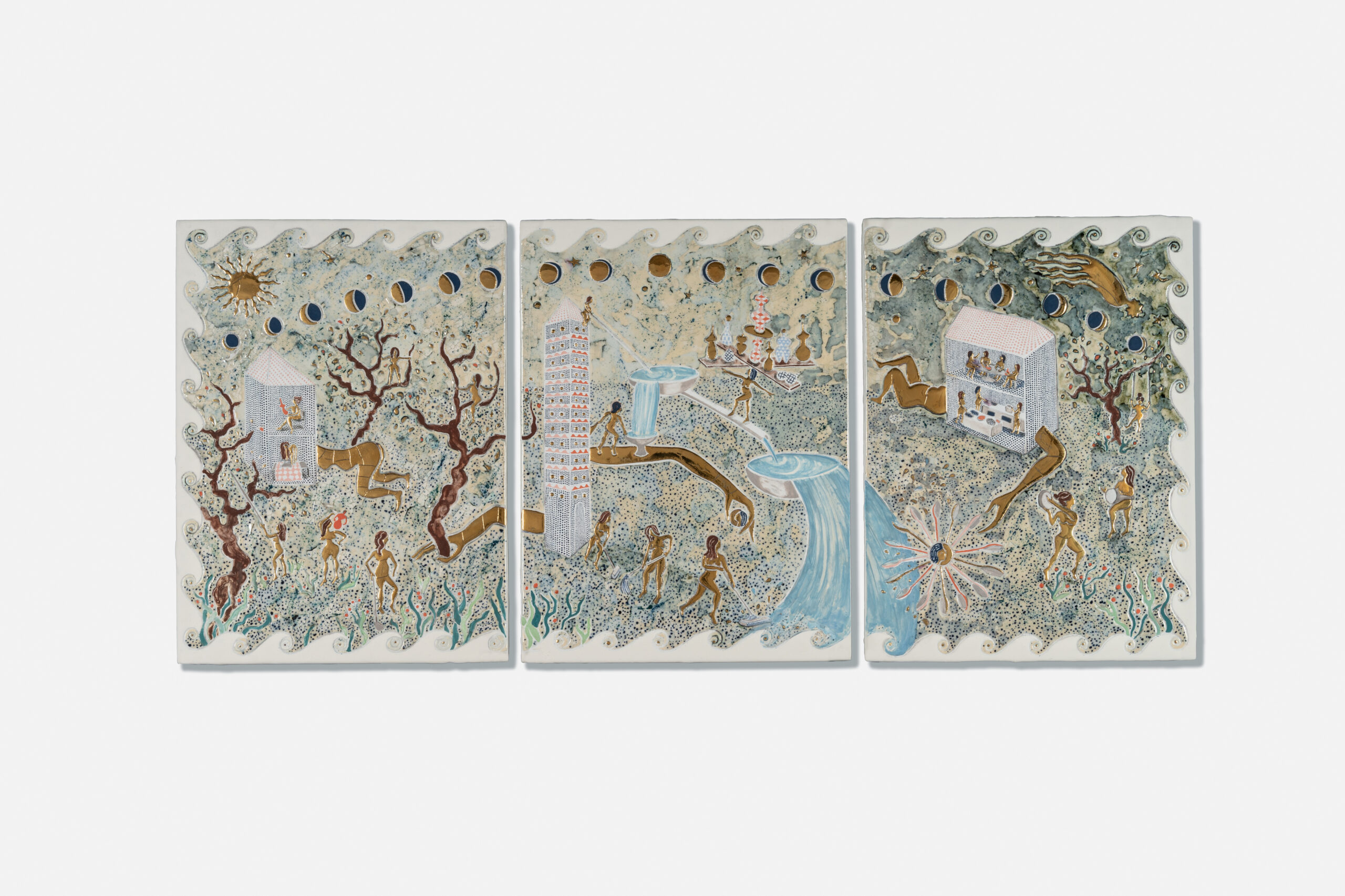
Like Turkey itself—a land that has long served as a bridge between Asia and Europe—Elif Uras's work embodies both the richness and the inherent tensions of existing between worlds. Her practice navigates the complex equilibrium of identity, power, and cultural heritage that has defined this geography through millennia.
Born in Ankara and now working between New York, Istanbul, and Iznik, Uras brings a unique perspective shaped by her unconventional path—from studying economics and law to earning her MFA from Columbia University. Following her landmark 2015 exhibition at the Aldrich Contemporary Art Museum and recent shows at the Pera Museum and MO.CO. Panacée, she has established herself as a crucial voice in contemporary Turkish art. In today's Turkey, where women's rights face mounting challenges, these tensions take on new urgency. Through her mastery of Iznik pottery—a formerly male-dominated tradition dating back to the Ottoman Empire—Uras transforms traditional craft into a medium of resistance, creating works that both honour and subvert their cultural inheritance.
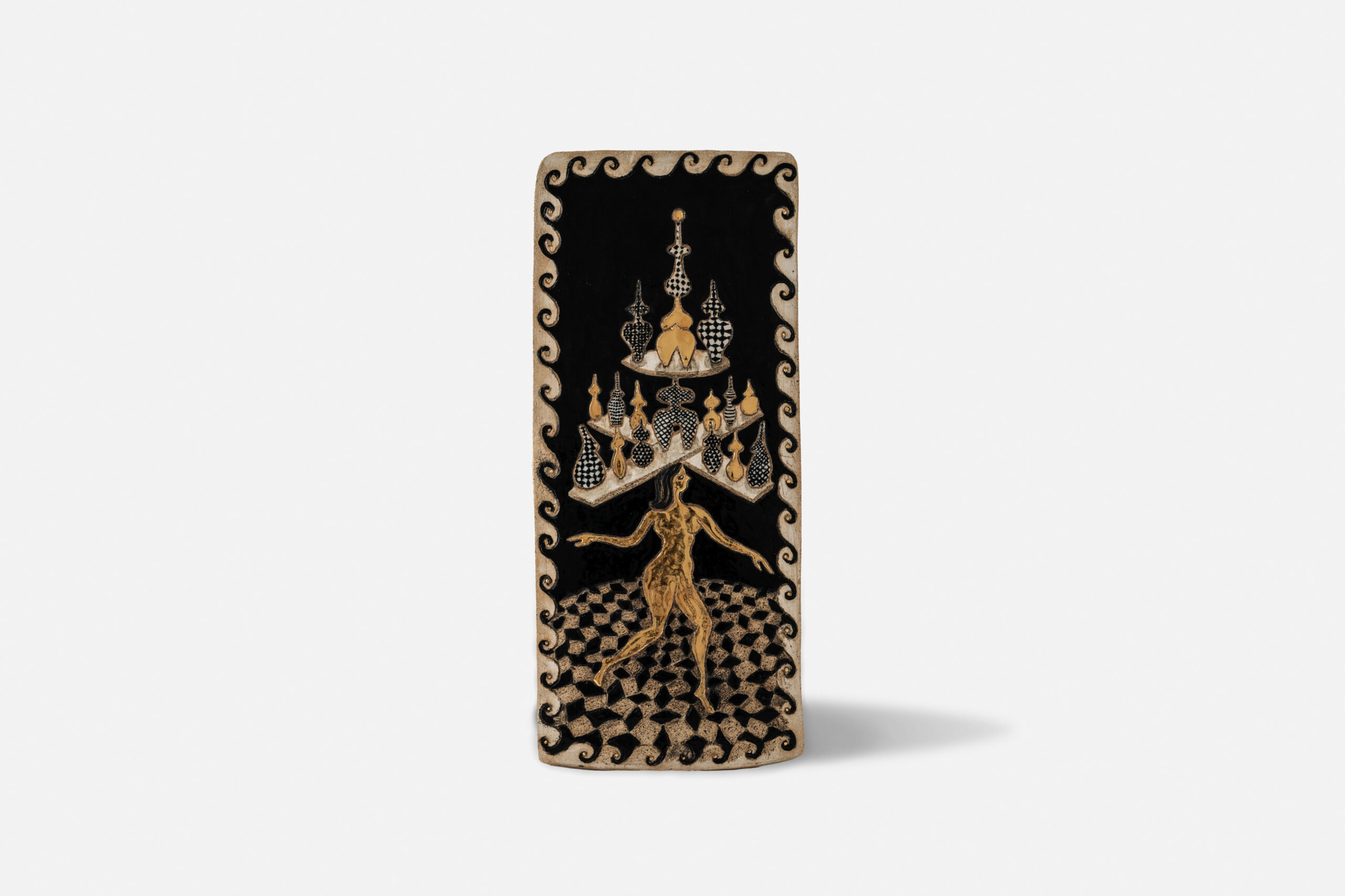
The exhibition opens with "The Juggler" (2025), a stoneware piece that presents a recurring Uras motif: a woman balancing vessels on wooden crosses atop her head. While this exhibition features one version, Uras has explored this subject repeatedly in other works, creating golden-glazed women against varied background patterns, each telling its own distinct narrative. For those familiar with her practice, these vessels operate as a private visual lexicon, each a miniature citation of her larger works—an encoded autobiography transformed into artistic manifesto.
Drawing on her ongoing investigation of labour and gender in Turkish culture, the first brightly lit room offers "Domestic Labor" (2024) four window-like scenes framed by ornate, theatrical curtains. Golden-glazed nude figures engaged in household tasks—mopping, sweeping floors—transform mundane domestic labour into charged tableaux. By encasing these scenes in elaborate rococo frames—traditionally reserved for paintings of leisure and luxury—Uras elevates overlooked female labour to the realm of high art, while her figures' provocative poses suggest that even the most routine domestic acts can harbour rebellion.
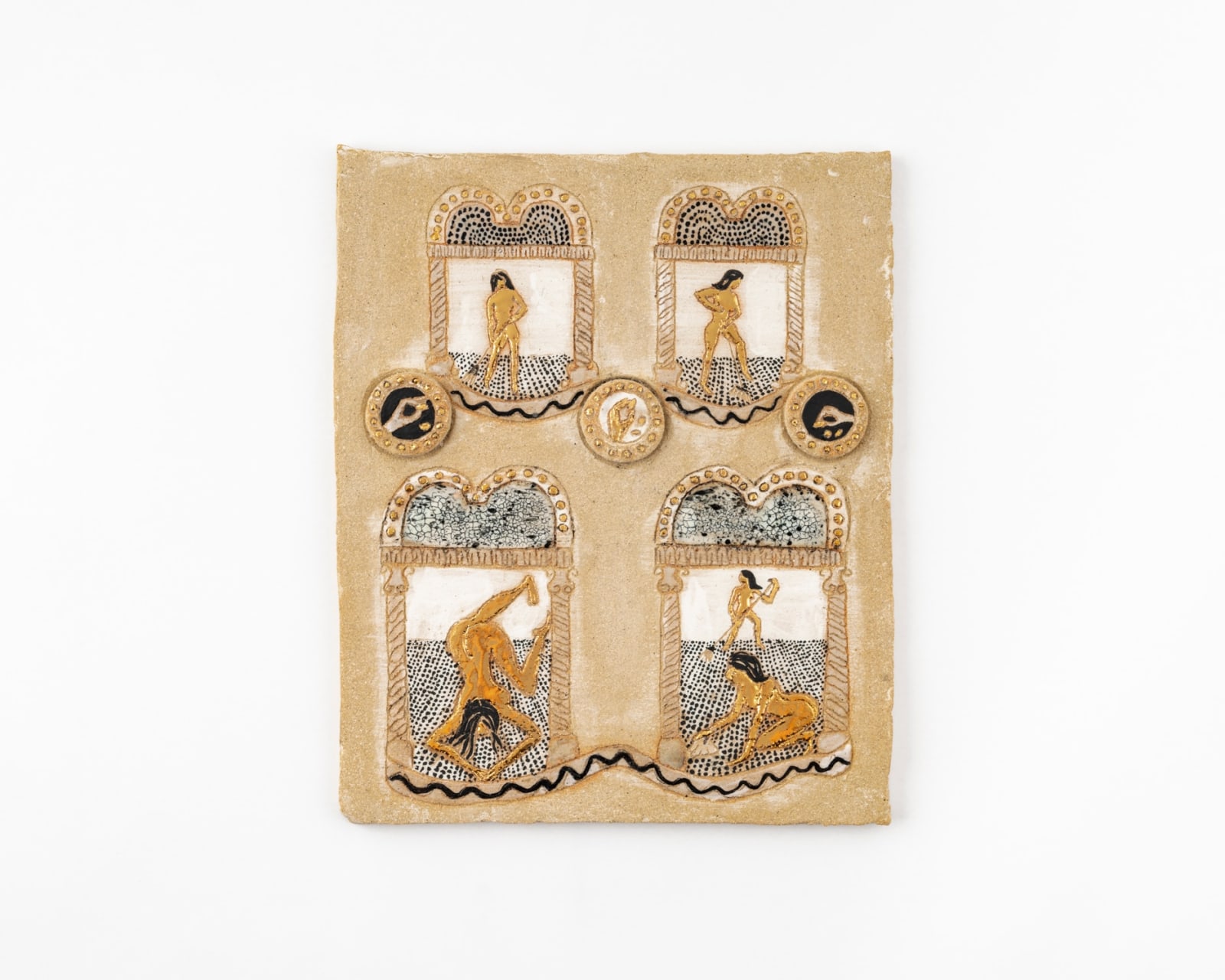
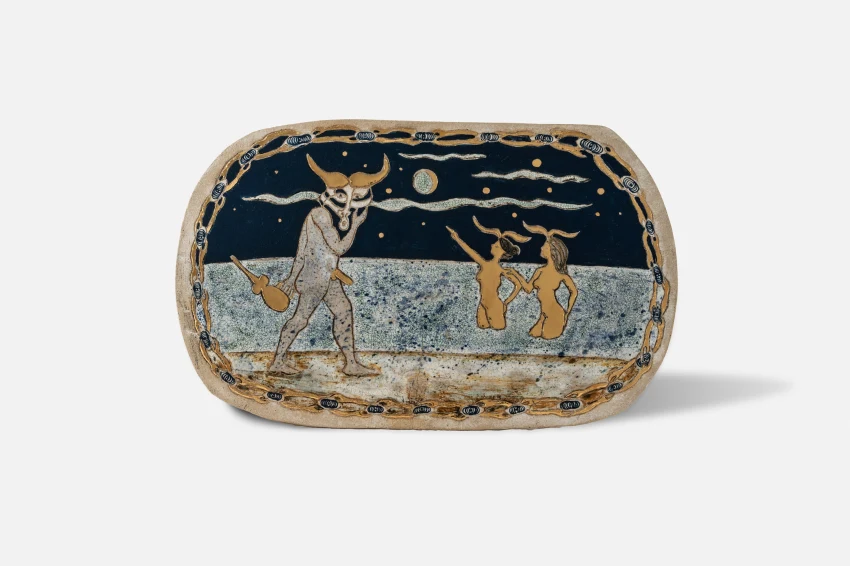
Continuing her practice of reinterpreting historical imagery rooted in both Western and eastern cultures--"Mermaids and the Minotaur" (2025) demonstrates Uras's subversive humour through inverted mythological power dynamics. A gold-glazed Minotaur, rendered with a deliberately prominent penis, turns away in apparent shame from two assertive mermaids displaying their own golden horns—transforming ancient symbols of masculine power into tools of feminine authority.
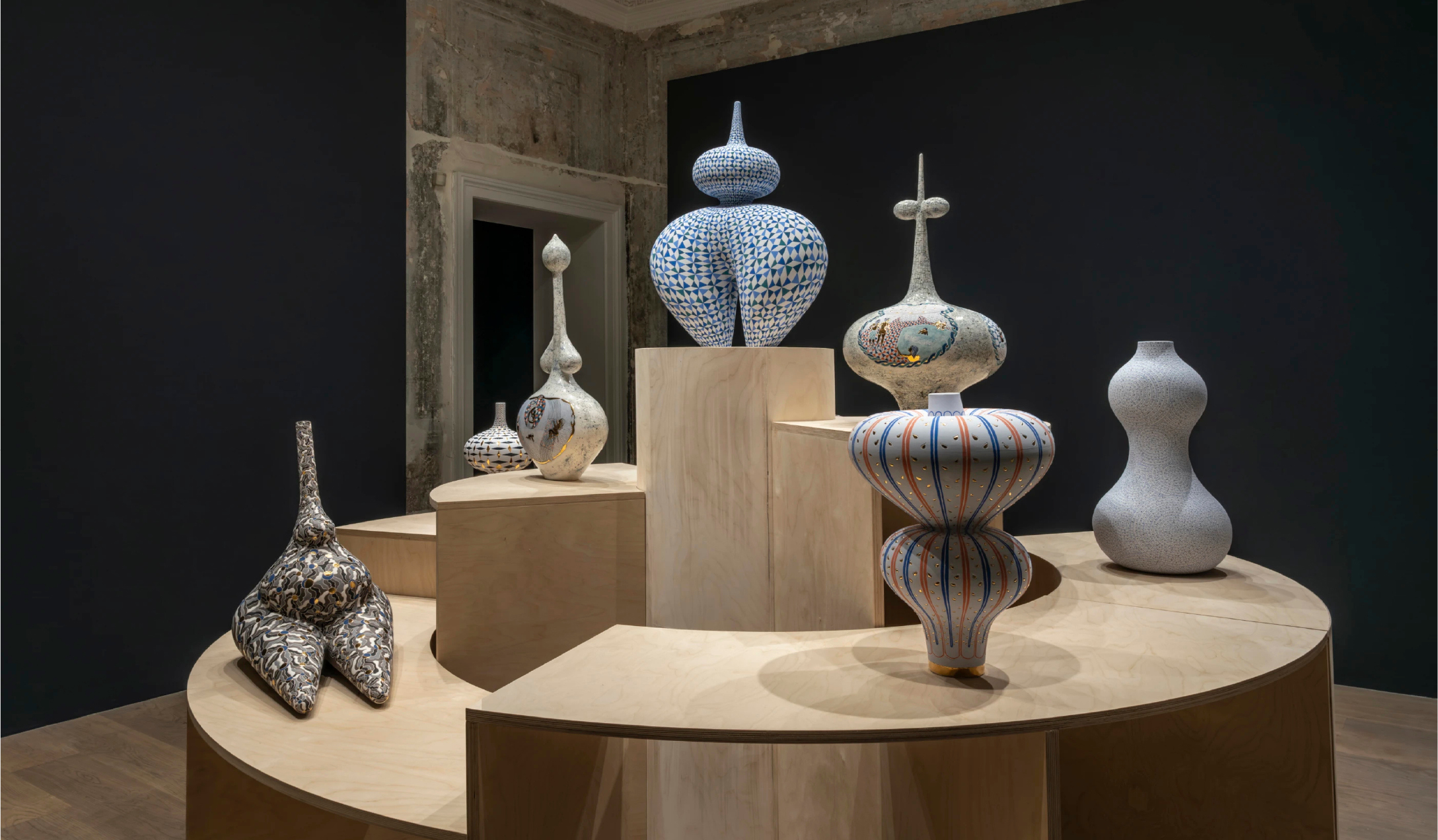
A series of rectangular slabs guides viewers through art history--a dialogue between Western and Turkish Modernism, from a vibrant homage to Picabia's mechanical aesthetic to "Crying Semiha," (2025) where Uras reinterprets the classical odalisque In the latter, paying tribute to Semiha Berksoy—the renowned Turkish opera singer and painter. By transforming the figure's nipples into weeping eyes with flowing rivers, she merges surrealist vocabulary with Turkish cultural heritage to convert the traditionally passive female figure into an active, emoting presence.
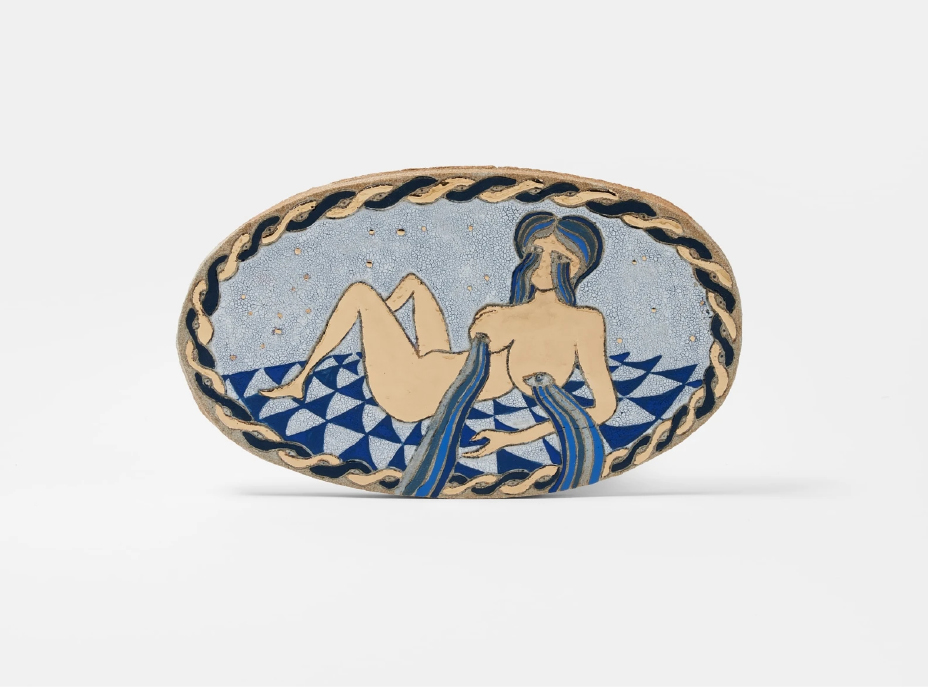
The exhibition's centrepiece unfolds in the middle room—functioning like a pistil at the heart of a flower. Here, on a purpose-built platform reminiscent of multi-tiered desert etageres in a fancy patisserie—another sphere where women's craft is simultaneously essential and diminished—"Seated Moonlight" and "Totem of Spirals" (both 2025) command attention. These works, produced in collaboration with master craftswomen at the Iznik Foundation, celebrate feminine forms through undulating curves and organic spirals, their voluptuous silhouettes adorned with black, gold, and white abstract patterns. Against these smooth, monumental forms elongated vases shaped like female torsos create dynamic tension, notably "The Weavers" (2025), where sgraffito scenes of golden glazed women working a spiral patterned earth in different poses, tilling, cleaning, planting-- create dialogue between vessel and figure, container and contained.
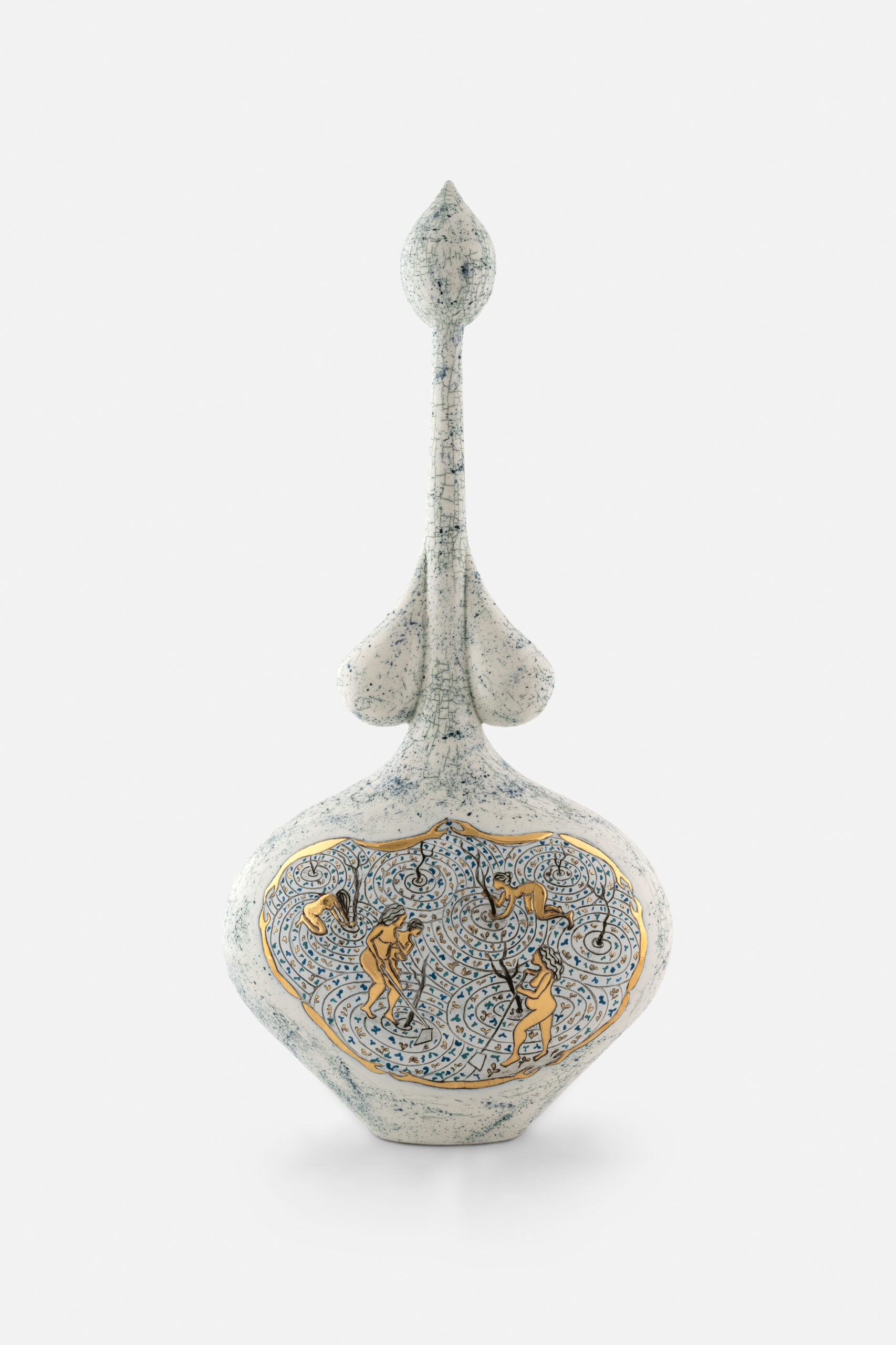
The exhibition culminates in a tour de force: a spiral installation of ceramic discs mounted on a black textile-covered wall. Beginning with coin-sized miniatures-historically symbols of masculine economic power—and expanding outward, the pieces are arranged in an ascending spiral. In dimmed lighting, gold-glazed figures shimmer like constellations, creating a celestial map of feminine power and resilience through the ages. Each disc is meticulously carved with portraits—from mythological goddesses and empresses to Medusas and witches, alongside women engaged in manual labour. Through this choreographed arrangement, Uras collapses hierarchies between the mythic and mundane, transforming the installation into a monument for women.
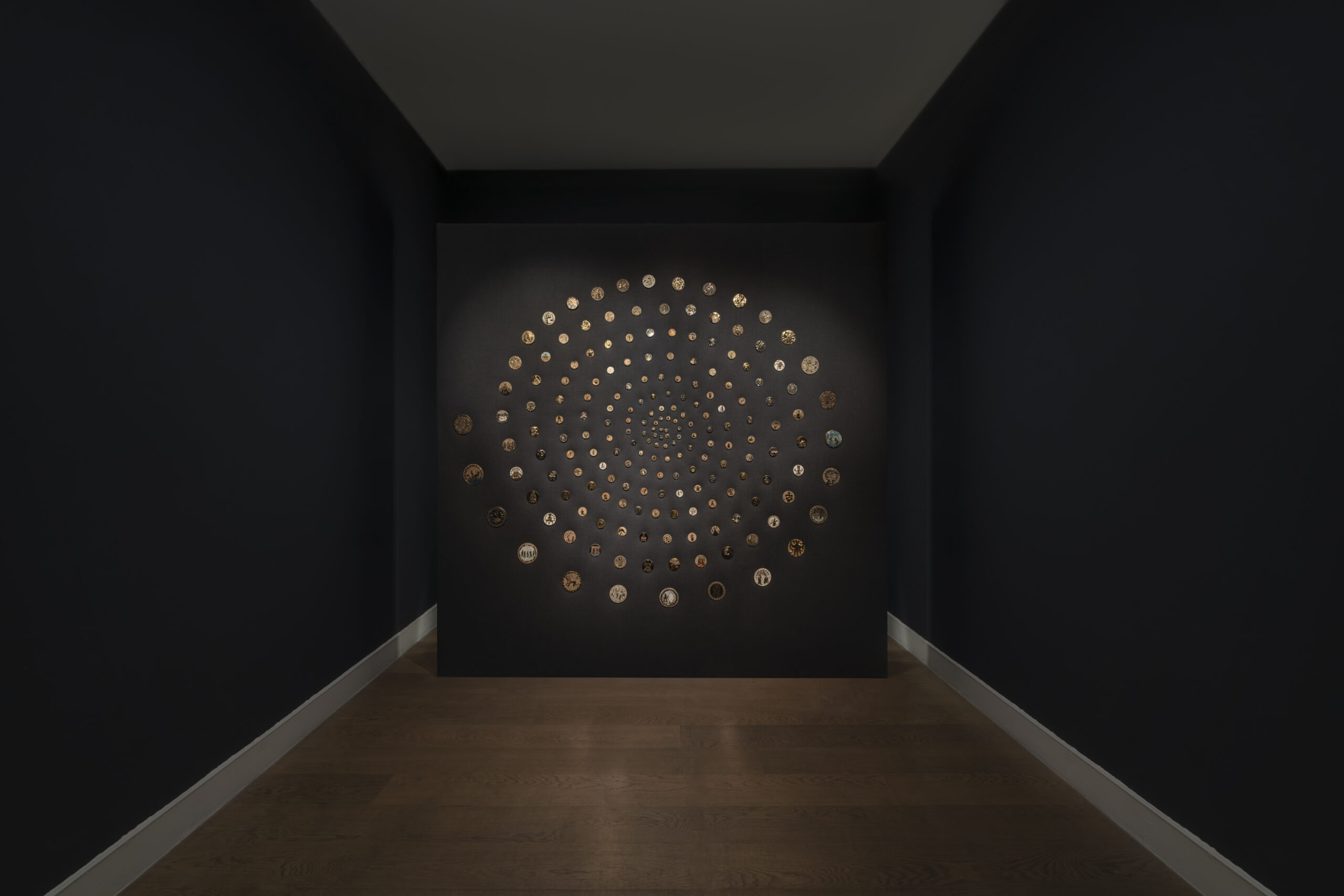
Uras collapses hierarchies between the mythic and mundane, transforming the installation into a monument for women.
In "Earth on Their Hands," Uras has created more than an exhibition—she has crafted a portal into her rich world of dreams and visions, where every piece exudes political defiance. Through her masterful manipulation of clay, pattern, and gold, she transforms ancient techniques and motifs into contemporary commentary, all while maintaining the delicate balance between beauty and critique, tradition and subversion. This show marks not just a culmination of her artistic journey, but a powerful declaration of feminine sovereignty across time and space.
Dr. Tamara Chalabi is co-founder of Ruya Foundation and ITERARTE, with curatorial projects spanning the Mediterranean to Central Asia. Her international exhibitions bridge cultural heritage with contemporary artistic practice.

